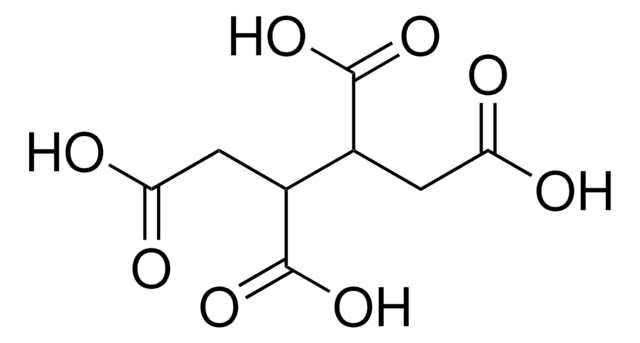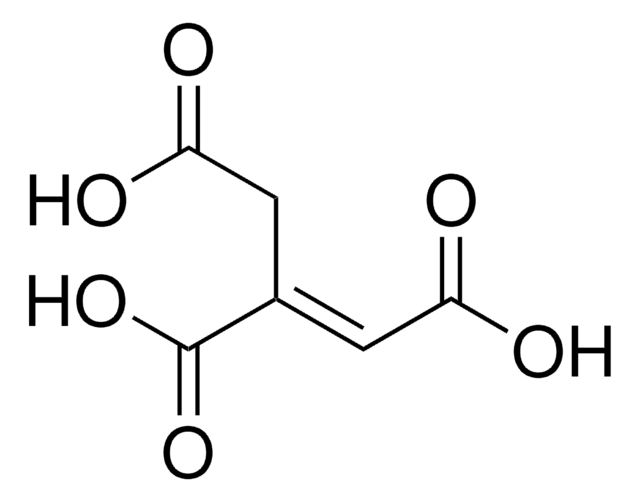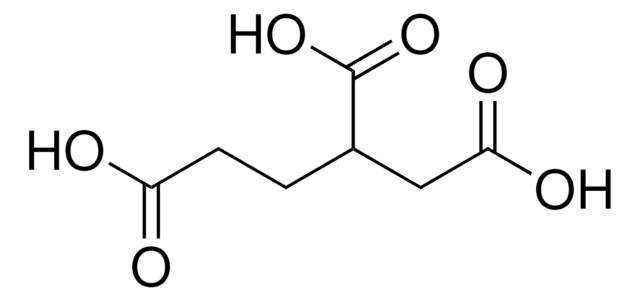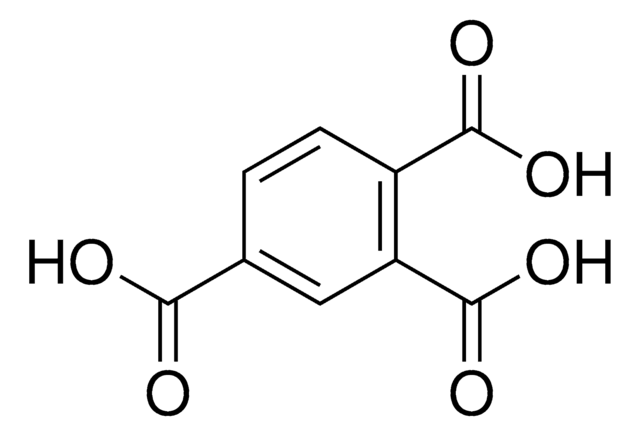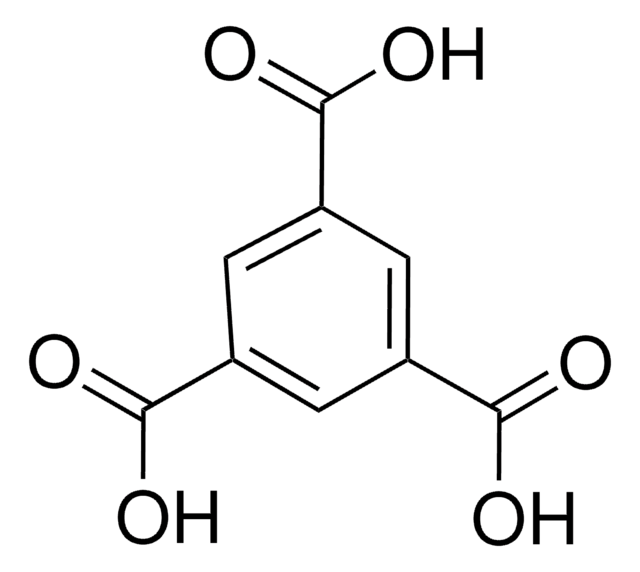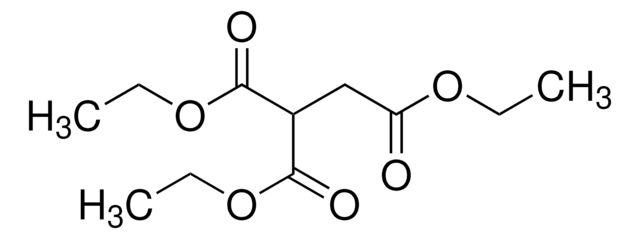T53503
Tricarballylic acid
99%
Synonyme(s) :
1,2,3-Propanetricarboxylic acid
About This Item
Produits recommandés
Niveau de qualité
Essai
99%
Pf
156-161 °C (lit.)
Chaîne SMILES
OC(=O)CC(CC(O)=O)C(O)=O
InChI
1S/C6H8O6/c7-4(8)1-3(6(11)12)2-5(9)10/h3H,1-2H2,(H,7,8)(H,9,10)(H,11,12)
Clé InChI
KQTIIICEAUMSDG-UHFFFAOYSA-N
Vous recherchez des produits similaires ? Visite Guide de comparaison des produits
Catégories apparentées
Description générale
Application
- Effect of organic acids on the solid-state polymorphic phase transformation of piracetam.: Examines the impact of tricarballylic acid and other organic acids on the polymorphic phase transformation of the drug piracetam, relevant for pharmaceutical formulations and drug stability studies (Fan F et al., 2023).
- Nanotubule inclusion in the channels formed by a six-fold interpenetrated, triperiodic framework.: Describes the synthesis of novel materials incorporating tricarballylic acid, which could have implications for polymer production and advanced material applications (Kusumoto S et al., 2023).
Code de la classe de stockage
11 - Combustible Solids
Classe de danger pour l'eau (WGK)
WGK 3
Point d'éclair (°F)
Not applicable
Point d'éclair (°C)
Not applicable
Équipement de protection individuelle
dust mask type N95 (US), Eyeshields, Gloves
Faites votre choix parmi les versions les plus récentes :
Déjà en possession de ce produit ?
Retrouvez la documentation relative aux produits que vous avez récemment achetés dans la Bibliothèque de documents.
Les clients ont également consulté
Global Trade Item Number
| Référence | GTIN |
|---|---|
| T53503-1KG | |
| T53503-25G | 4061837347399 |
| T53503-5G |
Notre équipe de scientifiques dispose d'une expérience dans tous les secteurs de la recherche, notamment en sciences de la vie, science des matériaux, synthèse chimique, chromatographie, analyse et dans de nombreux autres domaines..
Contacter notre Service technique